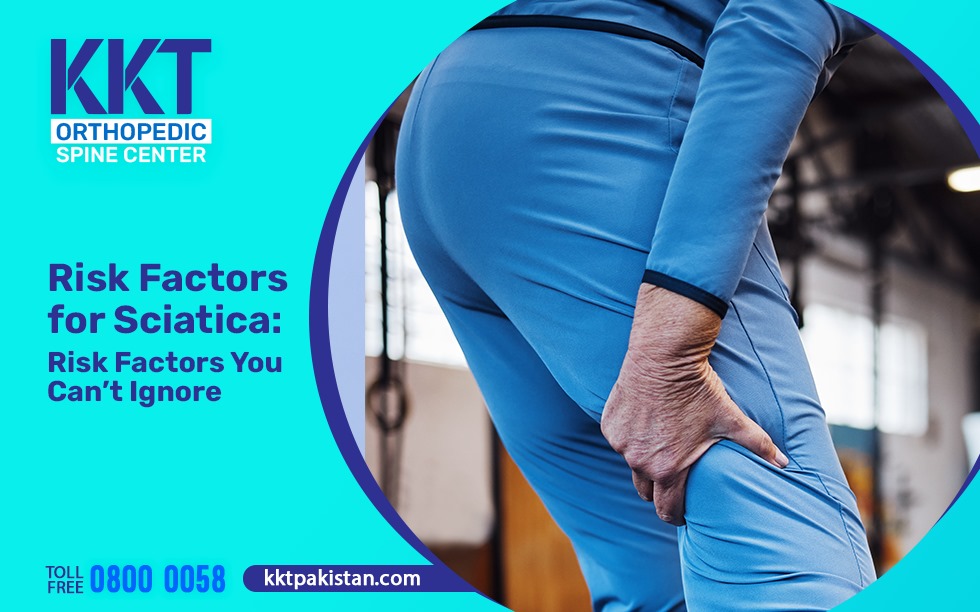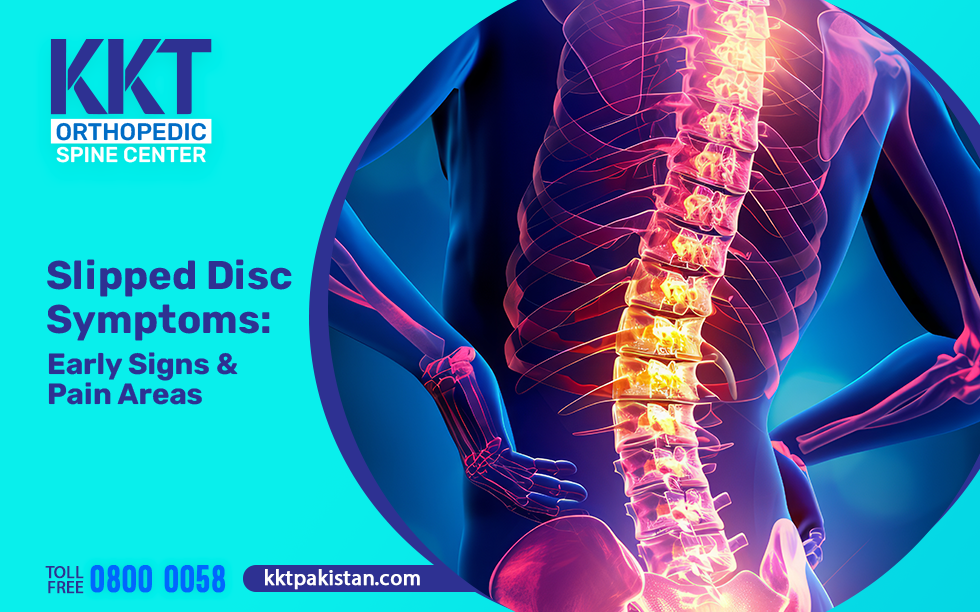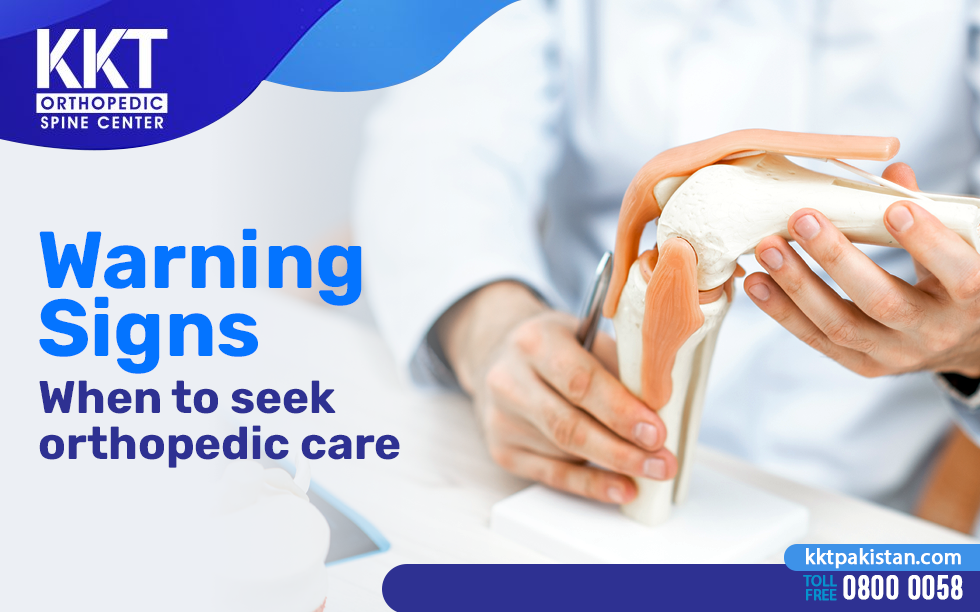Risk Factors for Sciatica: Risk Factors You Can’t Ignore
Sciatica is pain, tingling, or numbness that radiates along the path of the sciatic nerve—the longest nerve in the body, running from the lower back through the hips and down each leg. It occurs when the nerve is compressed or irritated, often due to:
Sciatica can become chronic or debilitating if ignored, but many risk factors are modifiable. Take proactive steps and avoid triggers such as sitting for an extended period and weight lifting with poor technique. Spot early warning signs: mild back stiffness and leg tingling. These symptoms may signal impending sciatica. Addressing it early with stretching/physical therapy can prevent full-blown symptoms. For genetic risk, prioritize core strength and spine-friendly exercise (swimming, yoga).
Risk Factors for First-Time Incidence of Sciatica
Sciatica often arises from mechanical, lifestyle, and biological factors. Understanding these risks can help prevent or delay its onset.
Heavy lifting, especially with poor form, prolonged sitting (e.g., desk jobs, driving), and repetitive twisting/bending (e.g., construction, nursing). Spinal changes such as herniated/bulging discs (the most common cause, often at L4-S1), spinal stenosis, spondylolisthesis (slipped vertebra), and piriformis syndrome (tight muscle pinches sciatic nerve) can cause sciatica. A sedentary lifestyle and medical conditions such as diabetes, smoking, and being obese can result in sciatica.
Does Obesity Increase the Chances of Sciatica?
Obesity significantly increases the risk of sciatica due to added mechanical stress on the spine. Excess weight (especially abdominal fat) places constant pressure on the lumbar spine, accelerating disc herniation (a leading cause of sciatica). Studies show obese individuals have a 34–48% higher risk of lumbar disc disease compared to those with a healthy BMI. Obesity often correlates with weak core muscles and poor posture, increasing strain on the lower back.
- Losing just 5–10% of body weight can reduce pressure on the spine and improve symptoms.
- Low-impact exercise (swimming, walking, yoga) strengthens muscles without jarring the spine.
- Anti-inflammatory diets (rich in omega-3s and leafy greens) may help reduce nerve irritation.
Can Poor Sleeping Positions Contribute to Sciatica?
Poor sleeping positions can contribute to sciatica or worsen existing symptoms by increasing pressure on the sciatic nerve or irritating the lower spine. Here’s how:
- Stomach Sleeping forces the spine into an unnatural hyperextended position. Twisting the neck and pelvis can misalign the spine, increasing nerve compression.
- Fetal Position (Too Tight) While a moderate fetal position can help, curling too tightly may compress the lumbar discs and irritate the sciatic nerve.
- Back Sleeping with Poor Support can strain the lower back if your mattress is too soft or your pillow placement is wrong.
- Lack of knee support (e.g., no pillow under the knees) can increase lumbar pressure.
A medium-firm mattress (not too soft or hard) supports spinal alignment. Stretching before bed is also effective. Gentle piriformis stretches or the child’s pose can relieve nerve tension. Change positions slowly and avoid sudden twisting as it can aggravate sciatica.
Does Diabetes Increase the Risk of Sciatica?
Diabetes is when the body no longer regulates blood sugar levels properly. When blood sugar levels remain high for an extended period, they damage nerves and fibers throughout the body.
The nerves usually affected first are the small nerves of the hands and feet.
Diabetes increases the risk of sciatica. It causes neuropathy, damaging the nerves of the lower extremities. Although it can cause symptoms similar to sciatica, they develop over time.
How Does Aging Affect the Risk of Sciatica?
Sciatica is more likely to develop with age. As people age, their bones become weaker, drier, and less flexible, which increases nerve compression. The spine undergoes several changes, and individuals also face a heightened risk of developing spinal stenosis, herniated discs, and bone spurs, which cause sciatica.
Are There Genetic Risk Factors for Sciatica?
Genetics can increase the risk of sciatica, primarily through inherited traits that affect spinal structure, disc health, and inflammation. While sciatica is not directly inherited, certain genetic factors can predispose individuals to conditions leading to sciatic nerve compression.
Key genetic risk factors of sciatica are:
- Disc Degeneration and Herniation
- Spinal structural changes such as spinal stenosis, arthritis
- Inflammatory and pain sensitivity factors
Can a History of Back Injuries Increase the Risk of Sciatica?
A history of back injuries can elevate the risk of developing sciatica. Sciatica occurs when the sciatic nerve is compressed or irritated, often due to conditions affecting the lower spine. Previous back injuries may increase this risk in several ways:
- Herniated disc trauma from past injuries can weaken spinal discs.
- Spinal stenosis injuries may speed up the narrowing of the spinal canal.
- Previous injuries can lead to spinal misalignment, heightening the risk of nerve compression.
Are Smokers More Likely to Develop Sciatica?
Smokers are more likely to develop sciatica due to the harmful side effects of tobacco on spinal discs and blood flow.
- Smoking accelerates the disc degeneration process. Nicotine restricts blood flow to spinal discs, starving them of oxygen and nutrients.
- Toxins in cigarettes trigger systemic inflammation, irritating spinal nerves and resulting in chronic inflammation.
- It also reduces healing ability. Smoking impairs tissue repair, delaying recovery from disc injuries or nerve compression.
- Carbon monoxide lowers oxygen in the blood, worsening nerve function and causing oxygen deprivation and nerve damage.
What Smokers with Sciatica Can Do
Prioritize quitting (nicotine patches, counseling, or apps like Smoke Free) and boost spine health with:
- Hydration (discs need water to stay resilient).
- Anti-inflammatory foods (berries, fatty fish, turmeric).
- Low-impact exercise (walking, swimming) to improve circulation.
See a specialist if pain persists—early disc treatment prevents chronic issues.
How Does Heavy Lifting Affect Sciatica Risk?
Heavy lifting is a major risk factor for sciatica, especially when done improperly. It can directly compress or irritate the sciatic nerve by increasing pressure on the lower spine. Here’s how lifting contributes to sciatica and how to minimize risks:
Proper Lifting Technique
- Hinge at the hips, not the waist (keep back straight, bend knees).
- Hold loads close to your body (reduces spinal torque).
- Avoid twisting—pivot with the feet instead of rotating the spine.
Strength & Conditioning
- Strengthen core (planks), glutes (bridges), and legs to distribute load.
- Improve hip mobility to reduce lumbar strain.
How Can Stress and Mental Health Affect Sciatica?
Stress and poor mental health can worsen sciatica—and in some cases, even contribute to its development—through both physical tension and neurological pathways. Here’s how they’re connected and what you can do about it:
How Stress & Mental Health Impact Sciatica
- Muscle Tension & Nerve Compression: Chronic stress triggers tightness in the piriformis muscle (in the buttocks), which can compress the sciatic nerve directly. Stress-related clenching of back muscles increases spinal pressure, aggravating disc issues.
- Heightened Pain Sensitivity: Anxiety/depression lowers pain tolerance by amplifying central sensitization (where the brain perceives pain more intensely). Studies show sciatica patients with high stress report more severe and persistent pain.
Breaking the Cycle: Sciatica & Stress Management
- Progressive muscle relaxation (reduces piriformis tension).
- Deep breathing exercises (calms the nervous system, lowering pain signals).
- Walking in nature (reduces cortisol + keeps spine mobile).
- Seek Psychological Support: Cognitive Behavioral Therapy (CBT) has been proven to help chronic pain patients reframe pain responses.
- Lifestyle Adjustments: Prioritize sleep hygiene (poor sleep exacerbates pain and stress).
Treatment
KKT provides noninvasive and nonsurgical treatment to diagnose sciatica pain and its causes. It is a revolutionized form of re-aligning the spine to its normal position using noninvasive sound waves. This treatment method helps to ease the pain and release pressure on the sciatic nerve, providing long-lasting relief.
To learn more about sciatica and its treatment, visit our experts at one of our centers, schedule an appointment, or dial 0800-00-558.
Frequently Asked Questions (FAQs):
What causes sciatica problems?
The cause is usually a herniated disc or bone spur exerting pressure on the sciatic nerve.
What are the dangers of the sciatic nerve?
The possible dangers of sciatica are chronic pain, weakness, numbness, or permanent nerve damage if left untreated.
Can sciatica affect anyone?
Yes, but it’s more common in adults (30–50 years).
Are there genetic risk factors for sciatica?
A family history of disc problems may increase the risk primarily through inherited traits that affect spinal structure, disc health, and inflammation.
Does obesity increase the chances of sciatica?
Yes, extra weight stresses the spine. Excess weight places constant pressure on the lumbar spine, accelerating disc herniation (a leading cause of sciatica).
How does heavy lifting affect sciatica risk?
Weight lifting increases the risk of sciatica as it can strain the spine or cause disc herniation.
Are smokers more likely to develop sciatica?
Yes, smoking weakens discs and reduces blood flow to nerves.
Does diabetes increase the risk of sciatica?
Yes, smoking weakens discs and reduces blood flow to nerves.
What jobs are high-risk for sciatica?
Jobs with heavy lifting, prolonged sitting, or vibration exposure (e.g., truck drivers, warehouse workers).
Are construction workers more at risk of sciatica?
Yes, due to heavy lifting, bending, and physical strain.
Are there unexpected risk factors for sciatica?
Prolonged sitting (even on soft couches), stress, and poor posture.






